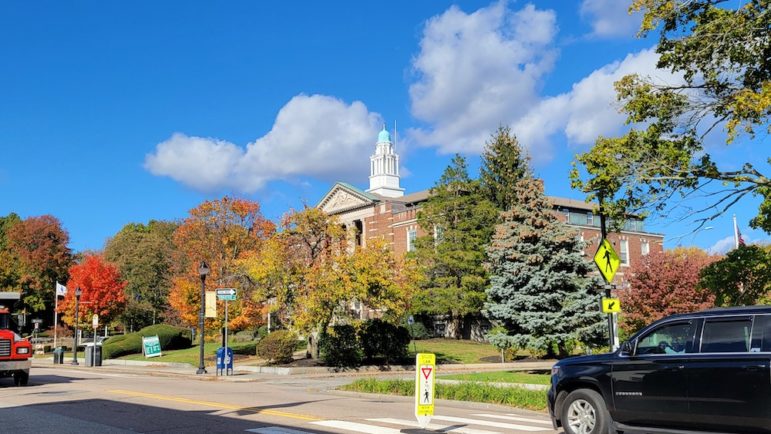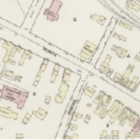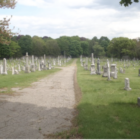An aerial view of Sand Banks Cemetery – Cottage Street comes in at the upper left corner and Mount Auburn Cemetery surrounds it on the other 3 sides. (Photo courtesy of Bill McEvoy)
This article is part of a series on local history provided by the Historical Society of Watertown. It was written by Joyce Kelly, Board member of the Historical Society of Watertown. Joyce writes articles for the newsletter and is the newsletter editor. This was published in our January 2016 newsletter, “The Town Crier.”
Almost single-handedly, Bill McEvoy has become a one-man “Friends of Sand Banks Cemetery.” Already a volunteer at Mount Auburn Cemetery researching historical data utilized by their docents for tours and talks, Bill became interested in the adjacent Mount Auburn Catholic Cemetery (also known as Sand Banks Cemetery and Cottage Street Cemetery) while researching local Civil War soldiers for programs at Mount Auburn commemorating the Sesquicentennial of the Civil War (1861-1865). He found at least 140 of them there and soon his concern extended to the rest of this mainly overlooked burial ground.











